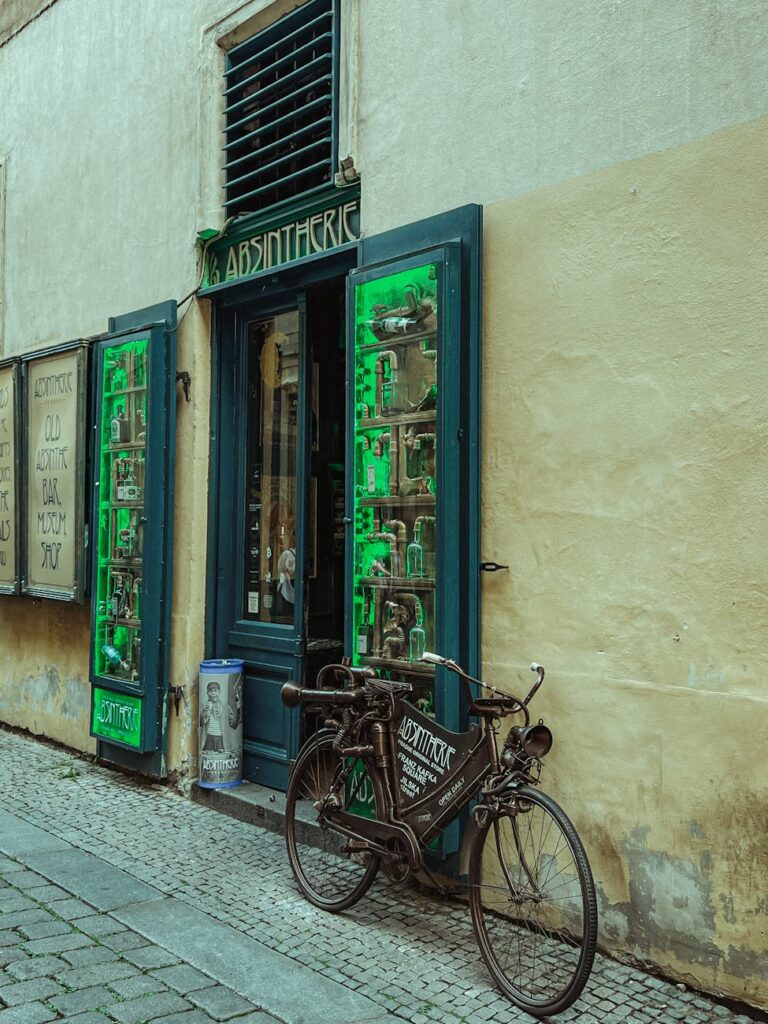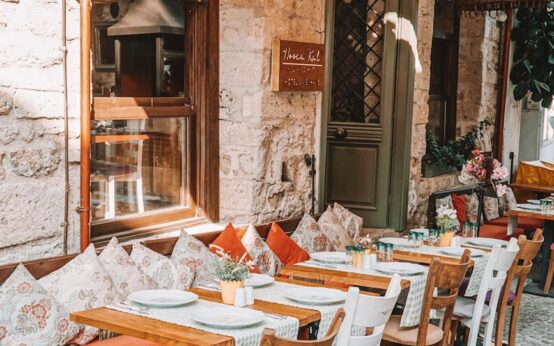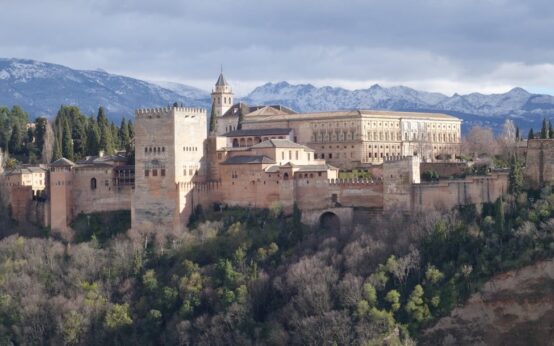A Guide to the Most Beautiful Greenhouses and Conservatories
There’s a certain kind of magic that happens when you step through the doors of a great conservatory. One moment you’re in a bustling city, the next, you’re enveloped in a world of humid air, the scent of damp earth and blooming flowers, and the rustle of giant palm fronds. It’s a total sensory reset. These magnificent glass palaces are more than just buildings filled with plants; they are living museums, architectural marvels, and vital hubs for conservation. Our guide to the most beautiful greenhouses on the planet is your ticket to exploring these incredible green sanctuaries, whether you’re planning a trip or just dreaming from your armchair.
From historic Victorian structures to futuristic biodomes, these spaces offer a glimpse into the incredible biodiversity of our world. They are places of peace, learning, and breathtaking beauty. So, let’s wander through some of the finest examples of horticultural heaven you can find.

Key Takeaways
- Greenhouses and conservatories are not just for plants; they are stunning architectural achievements that blend art, science, and nature.
- Iconic locations like Kew Gardens in London and the Eden Project in Cornwall set the standard for historical and modern conservatory design.
- Futuristic structures, such as Singapore’s Gardens by the Bay, redefine what a botanical experience can be, incorporating technology and sustainability.
- Visiting these spaces offers a unique travel experience, providing a peaceful escape and an educational journey into global ecosystems.
Exploring the World’s Most Beautiful Greenhouses
What elevates a simple glasshouse to one of the world’s most beautiful greenhouses? It’s a combination of factors. Visionary architecture plays a huge role, of course. So does the curation of the plant collection inside—the rare, the exotic, the breathtakingly lush. But it’s also about the experience. The way the light filters through the glass panes, the carefully designed pathways that invite you to get lost, the story the garden tells. Each location on our list has that special something.
The British Icons: A Legacy of Glass and Steel
The UK has a long, storied history with conservatories, dating back to the Victorian era’s obsession with botany and engineering. This legacy has produced some of the most famous and beloved glasshouses in the world.
The Palm House, Royal Botanic Gardens, Kew
You can’t talk about conservatories without talking about Kew. It’s the gold standard. Stepping into the Palm House at Kew Gardens is like time-traveling. Completed in 1848, this iconic structure of wrought iron and glass was a marvel of its time, and honestly, it still is. It was designed to house the exotic palms and tropical plants that Victorian explorers were bringing back to Britain from across the globe.
The air is thick, warm, and heavy with moisture. You’ll wander past towering palms, ancient cycads (some of which are among the oldest pot plants in the world!), and a dizzying array of tropical life. Don’t miss the spiral staircase that takes you up to a walkway, offering a stunning canopy-level view of the indoor rainforest. It’s a truly immersive experience. Kew isn’t just a single building; it’s a massive UNESCO World Heritage site with multiple glasshouses, including the equally impressive Temperate House—the largest surviving Victorian glasshouse in the world.
Tips for Visiting Kew Gardens:
- Book in advance: Tickets can sell out, especially on sunny weekends. Booking online is usually cheaper.
- Wear layers: It’s incredibly humid inside the Palm House, even on a cold day. You’ll want to be able to shed a jacket.
- Give yourself time: Kew is huge. You could easily spend a full day here and not see everything. Prioritize the glasshouses if that’s your main interest.
- Check for events: Kew hosts amazing events throughout the year, from the Orchid Festival to ‘Christmas at Kew’.
The Eden Project, Cornwall
If Kew is the historic heart of British botany, the Eden Project is its futuristic soul. Nestled in a former clay pit in Cornwall, this is not your grandmother’s greenhouse. The Eden Project is famous for its two enormous biomes, which look like giant, bubbly soap domes that have landed from outer space. They are, in fact, complex structures made from ETFE plastic pillows inflated with air.
The larger of the two is the Rainforest Biome, where you can experience the sights and sounds of four different rainforest environments: Tropical Islands, Southeast Asia, West Africa, and Tropical South America. It’s so big it even has its own waterfall! The second is the Mediterranean Biome, a fragrant and beautiful space filled with olive groves, citrus trees, and vibrant flowers from regions like the Mediterranean, South Africa, and California. The Eden Project is more than just a garden; it’s an educational charity and a social enterprise with a powerful message about our relationship with the planet.
Asian Marvels: Where Nature Meets Futurism
Moving across the globe, Asia has become home to some of the most innovative and jaw-dropping modern conservatories. They blend cutting-edge technology with mind-boggling design to create something entirely new.
Gardens by the Bay, Singapore
Nothing quite prepares you for the scale and ambition of Singapore’s Gardens by the Bay. This is a garden of the 21st century. While the iconic Supertree Grove often steals the show, the two cooled conservatories—the Flower Dome and the Cloud Forest—are the true horticultural heart of the park.

The Flower Dome is the largest glass greenhouse in the world, replicating a cool, dry Mediterranean climate. It’s home to a changing display of flowers and plants from various regions, and the seasonal exhibits are legendary. But for pure drama, the Cloud Forest is unbeatable. You enter and are immediately greeted by a 35-meter-tall indoor mountain and the world’s tallest indoor waterfall. The entire structure is shrouded in mist, and you ascend the ‘mountain’ via an elevator and then walk down through a series of aerial walkways. The plant life is lush, diverse, and representative of tropical montane regions. It feels like stepping into the world of ‘Avatar’.
“Gardens by the Bay isn’t just a collection of plants; it’s a statement. It proves that a dense, modern city can also be a world-class garden, integrating nature and urban life in a way that feels both sustainable and utterly spectacular.”
An American Classic: An Urban Oasis
The United States also has a rich tradition of building grand conservatories, often serving as vital green lungs for its sprawling cities. These institutions are centers for community, education, and botanical research.
Enid A. Haupt Conservatory, New York Botanical Garden
In the heart of the Bronx, a world away from the concrete and skyscrapers of Manhattan, lies the Enid A. Haupt Conservatory. It’s the centerpiece of the New York Botanical Garden and a masterpiece of Victorian-era glasshouse design. When you see its soaring central dome, you know you’re somewhere special.
The conservatory is structured as a series of connected galleries, each with its own distinct ecosystem. You can walk from a lush, tropical rainforest to a stark, arid desert in just a few steps. The aquatic plant house with its giant water lilies is a highlight, as are the extensive palm and desert collections. What makes this conservatory particularly beloved by New Yorkers are its incredible seasonal shows. The Holiday Train Show is a winter tradition, featuring model trains zipping through a landscape of plant-based NYC landmarks. In the spring, the Orchid Show transforms the entire building into an explosion of color and fragrance. It’s a place that continually reinvents itself, offering a new reason to visit with every season.

A Hidden Gem Worth the Journey
Beyond the world-famous names, there are countless other beautiful greenhouses waiting to be discovered. Sometimes the most memorable experiences are found in slightly more off-the-beaten-path locations.
The Royal Greenhouses of Laeken, Brussels, Belgium
Here’s one for the dedicated garden traveler. The Royal Greenhouses of Laeken are part of the private grounds of the Royal Palace, and here’s the catch: they are only open to the public for about three weeks each year in the spring. This exclusivity makes a visit feel incredibly special.
Commissioned by King Leopold II in the late 19th century, this vast complex is a ‘city of glass’ connected by long, glazed corridors. The architecture is a stunning example of Art Nouveau. Inside, you’ll find a massive collection of plants, many of which date back to Leopold II’s original collections. The blooming azaleas and the sheer scale of the geraniums are a sight to behold. A walk through these greenhouses feels like being let into a secret, royal world. If your trip to Brussels aligns with the open period (usually late April to early May), do not miss it.
Conclusion
From the historic ironwork of Kew to the futuristic domes of Singapore, the world’s most beautiful greenhouses and conservatories are so much more than just buildings. They are portals. They transport us to different climates, introduce us to plants we’d never otherwise see, and remind us of the incredible, fragile beauty of the natural world. They are monuments to human ingenuity and our enduring fascination with nature. Whether you’re a seasoned globetrotter or a local looking for a weekend escape, your nearest botanical garden is a world of wonder just waiting to be explored. So go ahead, step inside, and breathe deep.
FAQ
What is the difference between a greenhouse and a conservatory?
Historically, the terms had slightly different meanings. A greenhouse was a purely functional structure, often used for scientific research or growing plants for an estate. A conservatory was typically attached to a house, designed as an ornate architectural space for people to enjoy plants socially (like an extra sitting room). Today, the terms are often used interchangeably, especially for large public botanical buildings.
What should I wear when visiting a conservatory?
Think layers! Many conservatories, especially those housing tropical or rainforest collections, are kept very warm and humid year-round. It can feel like stepping into a sauna, even in the middle of winter. Wear a t-shirt or light top with a sweater or jacket you can easily remove. Comfortable walking shoes are also a must, as you’ll likely be doing a lot of strolling.
Are all of these conservatories open year-round?
Most major botanical garden conservatories are open year-round, with the exception of certain holidays. However, some, like the Royal Greenhouses of Laeken mentioned in our guide, have very limited public opening times. It is always best to check the official website of the garden you plan to visit for the most up-to-date hours, ticket prices, and any special event closures before you go.



 Faroe Islands: Guide to its Untamed, Serene Beauty
Faroe Islands: Guide to its Untamed, Serene Beauty  Discover the Joy of an Early Morning Walk in the City
Discover the Joy of an Early Morning Walk in the City  Islamic Gardens: A Paradise of Calming Symmetry
Islamic Gardens: A Paradise of Calming Symmetry  Best Plein Air Painting Destinations | Artist’s Guide
Best Plein Air Painting Destinations | Artist’s Guide  Birdwatching for Travelers: A Calming Hobby on the Go
Birdwatching for Travelers: A Calming Hobby on the Go  How to Find a Secluded Hot Spring (Away From Crowds)
How to Find a Secluded Hot Spring (Away From Crowds)  AI and Blockchain: A Powerful Tech Synergy
AI and Blockchain: A Powerful Tech Synergy  Get a Job in Blockchain: Your 2024 Web3 Career Guide
Get a Job in Blockchain: Your 2024 Web3 Career Guide  Wallet Types Explained: Hot vs Cold & More (2024 Guide)
Wallet Types Explained: Hot vs Cold & More (2024 Guide)  How Venture Capital is Shaping the Crypto Industry
How Venture Capital is Shaping the Crypto Industry  Sentiment Analysis for Crypto: A Trader’s Ultimate Guide
Sentiment Analysis for Crypto: A Trader’s Ultimate Guide  NFTs: The New Key to Membership & Brand Loyalty | Guide
NFTs: The New Key to Membership & Brand Loyalty | Guide